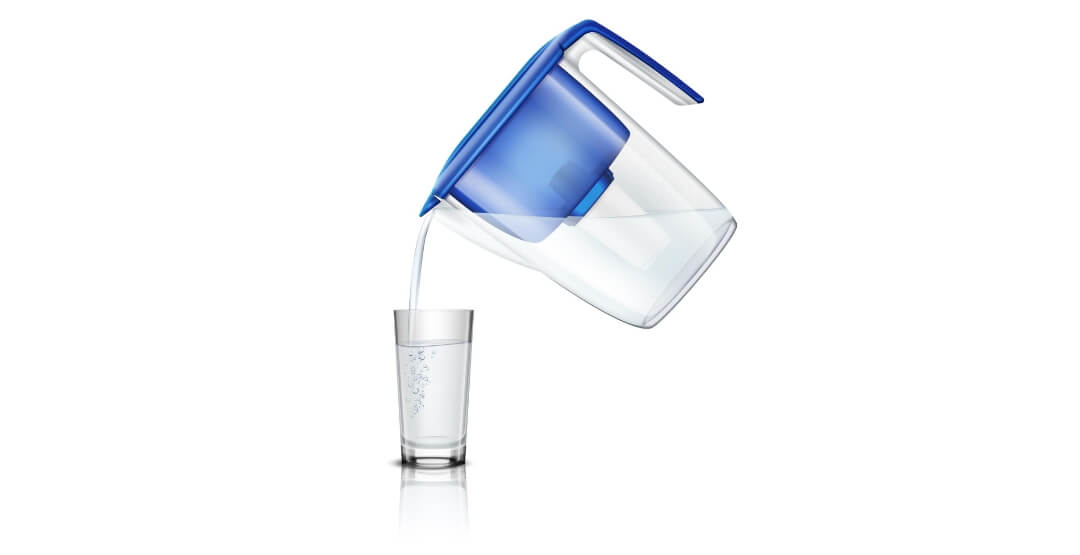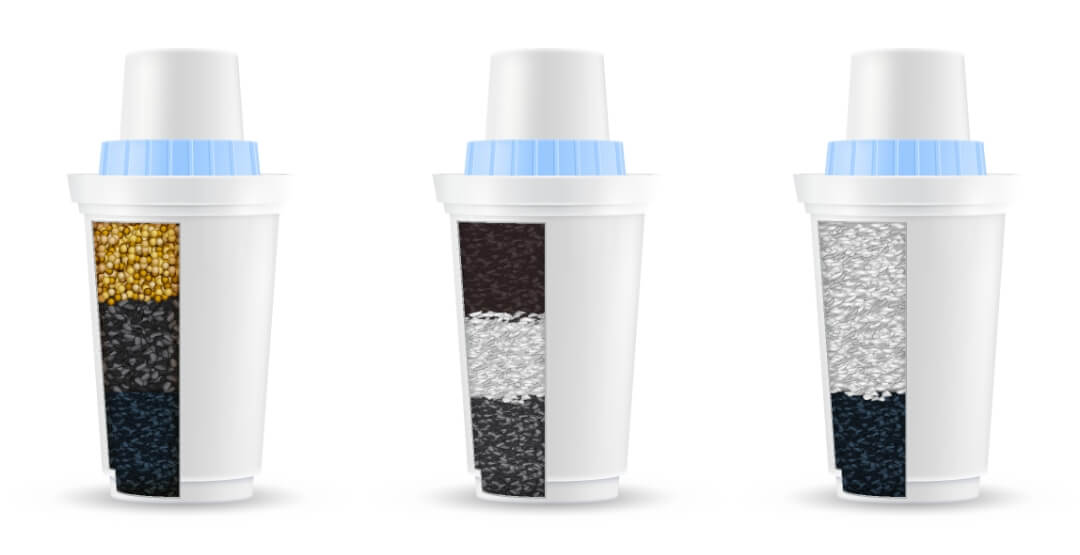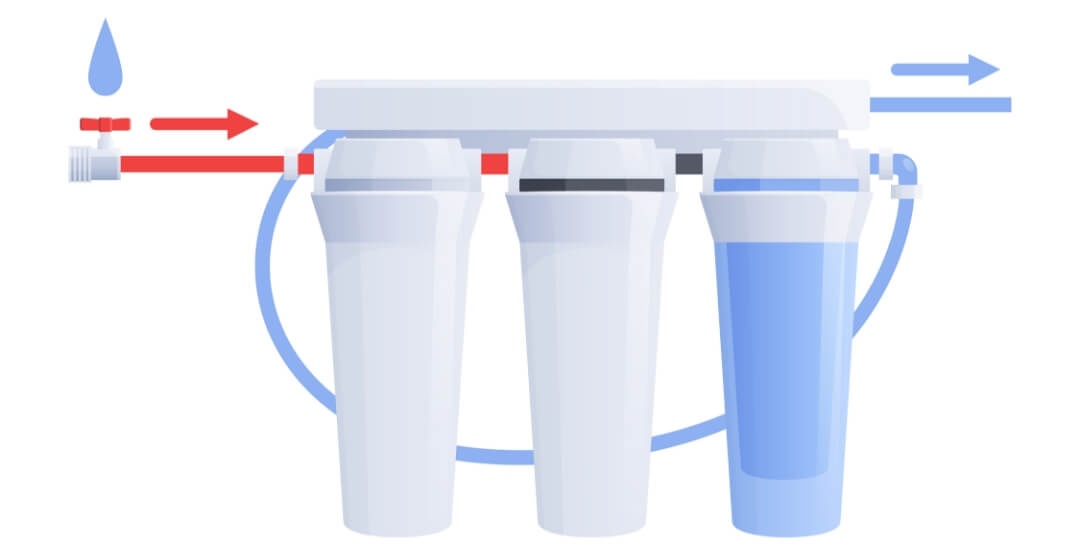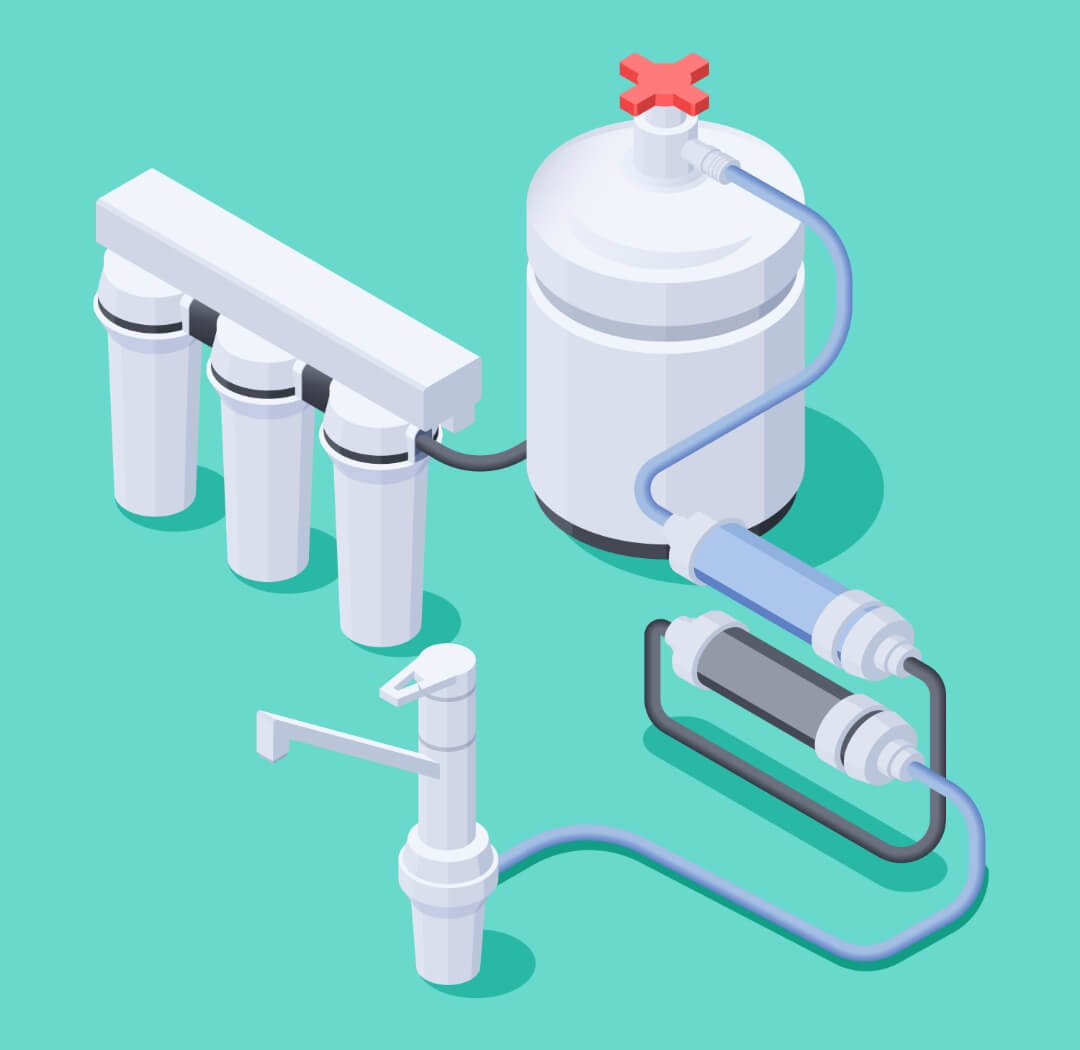
Water treatments for your home : The water filter carafe, The softener, Osmosis unit and Multi-functional filtration systems
There are many water purification devices and each has its own function. Let’s take a look at most of these systems and their domestic uses.
Why treat water that is already safe to drink?
The majority of pollutants that are covered by tap water quality standards are removed at some stage of treatment, so why bother with home filtration systems?
Many pollutants survive these treatment processes and end up in the water we drink:
- Iron and manganese: these metals are the most common, especially in groundwater, and are increasingly being treated biologically by oxidation and subsequent filtration.
- Ammonium: this ion is caused by the natural decomposition of organic matter and the use of fertilisers.
- Triazines: these nitrogenous pesticides of the triazine family are the most worrying, as conventional treatments only eliminate 50% of them. They therefore require additional treatments, such as activated carbon.
- Certain organic micropollutants, such as trichloroethylene and hydrocarbons.
The latter pollutants present in our water are dangerous for the body and require the use of domestic purification or filtration systems at the end of the chain.
Domestic treatments in detail
Domestic water filtration devices come in two main forms, those that are attached directly to the tap and those that are placed under the sink.
Simple filters
Filters attached to the tap are simpler and capture more or less pollutants and unwanted elements depending on the model. They often have a targeted water treatment objective and do not act on the mineralization of the water.

The water filter carafe
The water filter carafe is probably the most widely used home water treatment device, with over 1 million sold each year. It removes the taste of chlorine, as well as limescale and lead from the water. Its activated carbon filter simply filters the tap water and the cartridge must be changed regularly, approximately every 4 to 6 weeks.

The softener
The softener removes calcium and magnesium from the water and replaces them with sodium. As the resin filter retains the calcium and magnesium minerals and releases the sodium it contains, it needs to be regenerated, i.e. recharged with sodium by very salty water. It should be noted that this filter causes excess water consumption at each regeneration operation as well as significant brine discharge.
These basic filters have some advantages, such as low cost, but they do not purify water in the same way as filters based on the latest innovations in water treatment, which combine several technologies to target all forms of pollution.
From professional filters to home use
Modern filters are based on reliable technologies and treat a wide range of pollutants.

The osmosis unit
The osmosis machine purifies water containing pollutants by a filtering system that allows only the water molecules to pass. First developed by NASA for its astronauts, reverse osmosis is a highly efficient water filtration system.
Multi-functional filtration systems
The latest in domestic filtration, systems combining different filtration methods, such as the UBO ACS filters from the Ultra-Bio-Ozone® brand, are ideal for homes by aiming to eliminate all pollutants present in the water. These use 4 different treatment methods:
- A sediment filter to capture and remove heavy sediments, sand, scale and rust from pipes for example. They also allow the UV filter to work better as the sediment could prevent the UV light from reaching the pathogenic microbes.
- A UV filter has the function of destroying all micro-organisms in the water by exposure to ultraviolet light. However, this process has no effect on undesirable or polluting substances, hence the need for an additional system.
- An activated carbon filter to absorb dissolved substances and thus filter them.
- An ultrafiltration (UF) filter, whose membrane has a pore size of about 0.01.
Even though tap water is in theory rigorously monitored and treated, additional treatment is necessary to remove some pollutants coming from agriculture and certain heavy metals that slip through the net. These pollutants require effective filtration. Systems with multiple filters ensure that the product we consume most in our lifetime remains beneficial to our health.

